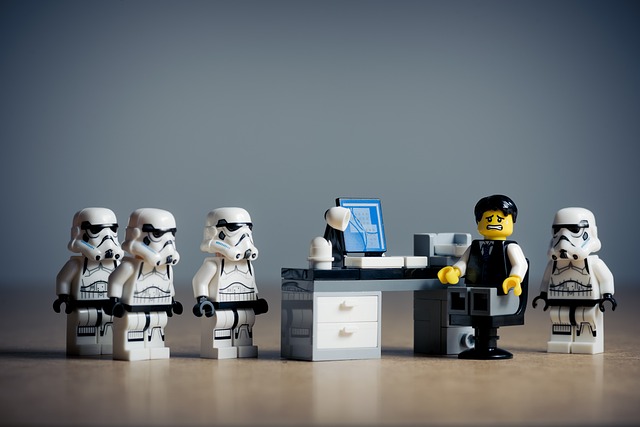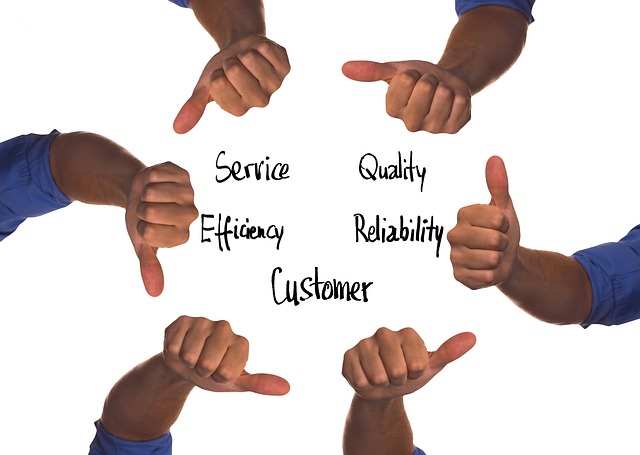Understanding the Importance of a Culture of Collaboration
When we speak about a culture of collaboration, we’re shining a light on the interconnectedness that fuels effective teamwork. In today’s fast-paced business landscape, organizations are not just collections of individuals; they are ecosystems that thrive on interaction, communication, and mutual respect. As companies strive for innovation and efficiency, fostering a collaborative atmosphere becomes imperative. Why? Because collaboration leads to diverse perspectives, fosters creativity, and ultimately drives successful outcomes. In a vibrant culture where collaboration is prioritized, individuals feel empowered to share their ideas openly. Each team member’s contribution becomes part of a larger tapestry, weaving together different thoughts and experiences into a cohesive strategy that enhances both individual and organizational performance.
So, what does it take to establish such a culture? Well, it begins with leadership. Leaders play a pivotal role in shaping the workplace environment. When they model collaborative behaviors, they set the stage for others to follow. For instance, when managers encourage open dialogue and provide platforms for sharing ideas, they break down barriers. These actions cultivate trust and transparency. Employees feel safe to express their ideas without fear of criticism. A remarkable transformation occurs when individuals perceive their leaders as allies in their journey. It cultivates not just teamwork, but also loyalty to the organization. Hence, it’s essential for leaders to engage consistently with their teams, not just through formal channels, but informally too. Frequent check-ins, casual conversations, and informal team-building activities can help reinforce a sense of community.
The Role of Effective Communication in Teamwork
Effective communication acts as the backbone of a successful teamwork culture. Communication encompasses verbal and non-verbal interactions, written exchanges, and digital messages. Consider this: a team that communicates well is like a well-oiled machine. Each part, or team member, knows their role and how their contributions fit into the broader objective. Open lines of communication enhance clarity around tasks and responsibilities, ensuring everyone is on the same page. As team dynamics evolve, misunderstandings can arise. However, when there’s a strong communication framework, teams can address issues promptly. Being proactive about communication helps prevent conflicts that can derail projects.
Moreover, enabling effective communication means providing various channels for team members to express themselves. Some people may prefer face-to-face conversations, while others feel more comfortable using messaging platforms or emails. Providing that flexibility shows respect for individual preferences, further contributing to a sense of belonging. Additionally, regular team meetings serve as a platform for updates, idea sharing, and feedback. Structured formats for these meetings can help maintain focus and maximize productivity. Yet, it’s equally important to create room for brainstorming sessions where innovation thrives. Creativity blossoms in open forums where team members freely exchange ideas. Facilitating this kind of atmosphere encourages collaboration while also reinforcing a culture of teamwork.
Building Trust Within Teams
Building trust within teams is integral to nurturing a culture of collaboration. Trust acts as the glue that binds individuals together, making teamwork both achievable and enjoyable. Without trust, even the most talented teams may flounder. When team members believe in each other’s abilities and integrity, they are more likely to take risks. They can step out of their comfort zones, propose bold ideas, and collaborate without hesitation. One powerful way to foster trust is through team-building exercises. These activities create opportunities for team members to learn about one another beyond their job titles. Fun and informal settings can break down initial barriers. Whether it’s a team lunch, a retreat, or a simple icebreaker at the start of a meeting, such interactions help cultivate relationships.
Furthermore, transparency in decision making can significantly bolster trust. When teams understand how and why certain choices are made, they feel involved in the process. This experience cultivates ownership over outcomes, whether they are victories or setbacks. Additionally, acknowledging mistakes helps in building a culture of trust. When leaders and team members alike admit their missteps without assigning blame, it sets a precedent. It encourages others to do the same. Instead of shying away from challenges, teams can collaboratively identify solutions and learn from experiences. Every misstep can be recast as a learning opportunity, strengthening the team dynamic as they tackle future projects together.
The Power of Diversity and Inclusion
A truly collaborative culture thrives on diversity and inclusion. When organizations prioritize bringing together people from various backgrounds, experiences, and perspectives, they foster an environment rich in creativity and innovation. Research consistently shows that diverse teams outperform their homogenous counterparts. Different viewpoints can contribute to more thoughtful decision-making and problem-solving. For instance, a team composed of individuals from different cultural backgrounds may approach challenges with varied strategies, enabling the team to explore creative solutions. Harnessing such diversity requires a conscious effort; merely assembling a diverse group is insufficient. Organizations need to ensure inclusivity so that every voice feels valued.
Inclusion starts at the recruitment stage and should flow through all aspects of team dynamics. Organizations should actively seek to eliminate biases in hiring processes, ensuring that talent from all backgrounds has an opportunity to contribute. Once hired, it’s crucial to create spaces where everyone feels they belong. Regular training sessions on diversity awareness can equip team members with the understanding necessary to appreciate different perspectives. Additionally, creating opportunities for mentorship can empower underrepresented voices. This effort not only supports individual growth but also enriches the team by incorporating insights from diverse experiences. Ultimately, a commitment to diversity and inclusion transforms an organization’s culture, laying the groundwork for robust collaboration and unparalleled teamwork.
Encouraging Continuous Learning and Development
Another critical element in creating a culture of collaboration is fostering an environment that promotes continuous learning and personal development. Organizations that invest in their employees’ growth signal their commitment to long-term success. Team members who engage in professional development become more proficient in their roles. They also gain the confidence to share what they’ve learned with their colleagues. This knowledge-sharing creates synergy within teams, enhancing collective performance. Workshops, training sessions, and webinars are all excellent venues for showcasing new ideas and skills. Teams that grow together often find novel solutions to challenges that may have seemed insurmountable.
Moreover, encouraging cross-departmental learning can further deepen collaboration. For instance, a marketing team could partner with a technical team to understand how product features could be better promoted. These kinds of partnerships not only broaden knowledge bases but also foster relationships across the organization. Employees come to appreciate the challenges and expertise of their colleagues in different departments, ultimately building a more cohesive team environment. Additionally, recognizing individuals for their achievements in learning and collaboration can motivate others. Simple practices, like shout-outs in team meetings or highlighting success stories in company newsletters, can inspire widespread participation in the culture of continuous learning.
Utilizing Technology to Enhance Collaboration
In today’s digital age, leveraging technology to enhance collaboration is a game changer. Various tools and platforms exist that facilitate real-time communication, sharing, and project management. For example, collaborative tools like Slack, Microsoft Teams, or Asana allow teams to coordinate efforts seamlessly, regardless of location. By breaking down geographical barriers, technology enables teams to collaborate effectively and efficiently. Video conferencing platforms have transformed how teams interact, making face-to-face meetings possible even when individuals work remotely. This virtual engagement fosters connection and strengthens relationships among team members.
Moreover, utilizing project management software can streamline workflows. These tools help teams organize tasks, assign responsibilities, and monitor progress. When everyone is informed about who is doing what, it minimizes confusion and enhances accountability. Additionally, cloud-based document sharing promotes collaboration on written projects. Team members can provide feedback in real-time, ensuring that everyone contributes to the final product. As a result, technology does not just facilitate collaboration—it amplifies it. When organizations embrace these technological solutions, they create an environment where teamwork thrives, leading to innovative outcomes and greater employee satisfaction.
Measuring Collaboration Effectiveness
To maintain a thriving culture of collaboration, it’s crucial to measure its effectiveness. Evaluating how well teams work together provides insight into potential areas for improvement. Various metrics can help assess teamwork, such as project completion times and team member feedback. Surveys can be invaluable in gauging employee satisfaction regarding collaboration. Regular check-ins via these surveys provide a platform for employees to voice their opinions. If they feel collaboration can be improved, their input could pave the way for strategic changes.
Additionally, analyzing project outcomes helps organizations identify successful collaborative practices. If certain teams consistently deliver high-quality work, examining their processes can uncover valuable insights. Conversely, reviewing projects that fell short can help pinpoint hindrances. Was there a lack of communication? Did some team members not feel included? Addressing such questions allows organizations to adapt and refine their collaborative efforts continually. A culture of collaboration requires ongoing evaluation to flourish. By regularly assessing teamwork effectiveness, organizations can take meaningful steps toward fostering a truly collaborative atmosphere.
FAQs
- What are the key benefits of a culture of collaboration?
A culture of collaboration encourages diverse ideas, enhances creativity, and fosters better problem-solving. Teams that collaborate effectively typically see increased productivity and improved morale.
- How can leadership influence a culture of teamwork?
Leaders set the tone for the workplace culture. By modeling collaborative behavior, encouraging openness, and valuing every team member’s input, leadership can foster a strong culture of teamwork.
- What role does technology play in enhancing collaboration?
Technology streamlines communication and workflow. Tools like project management software and communication platforms enable teams to collaborate effectively, even across distances.
- How can diversity contribute to a collaborative environment?
Diversity introduces varied perspectives, enhancing creativity and innovation within teams. When all voices are heard, the likelihood of generating innovative solutions increases significantly.
- Why is measuring collaboration effectiveness important?
Measuring collaboration allows organizations to identify strengths and weaknesses in team dynamics. This evaluation helps refine collaborative efforts, ensuring continuous improvement and success.



